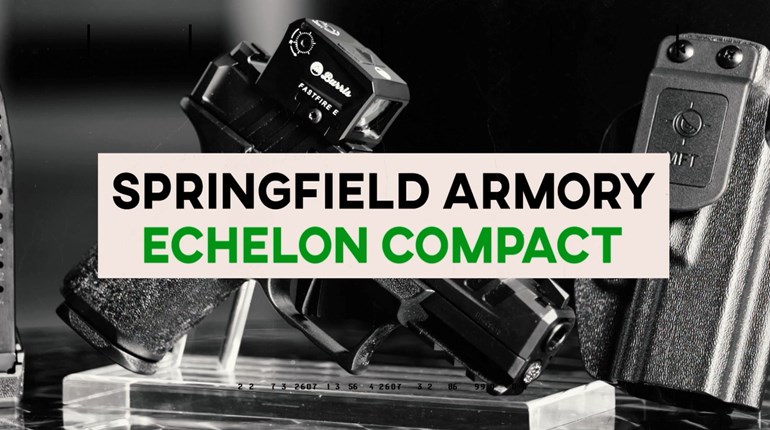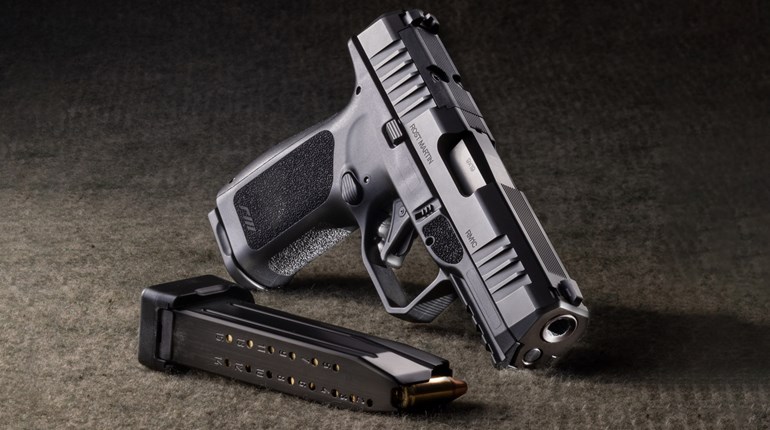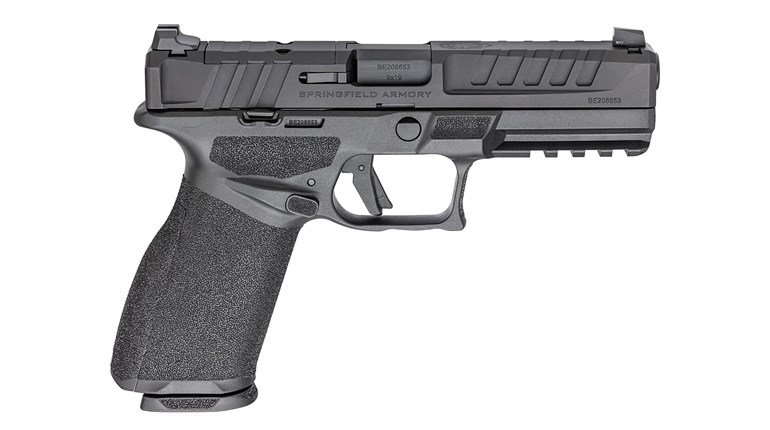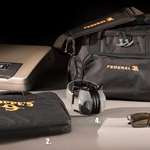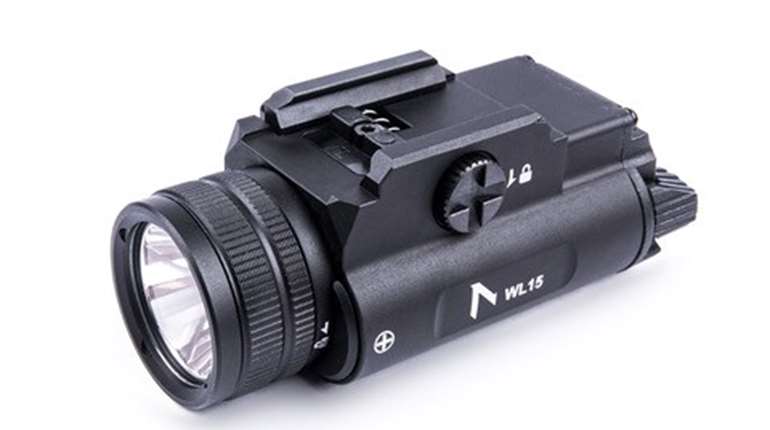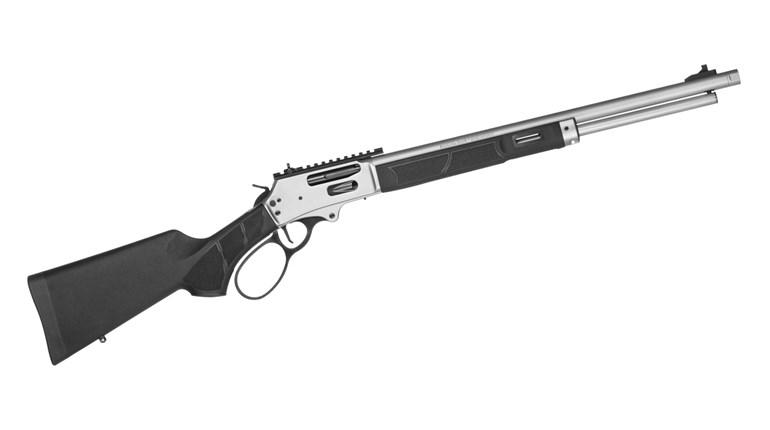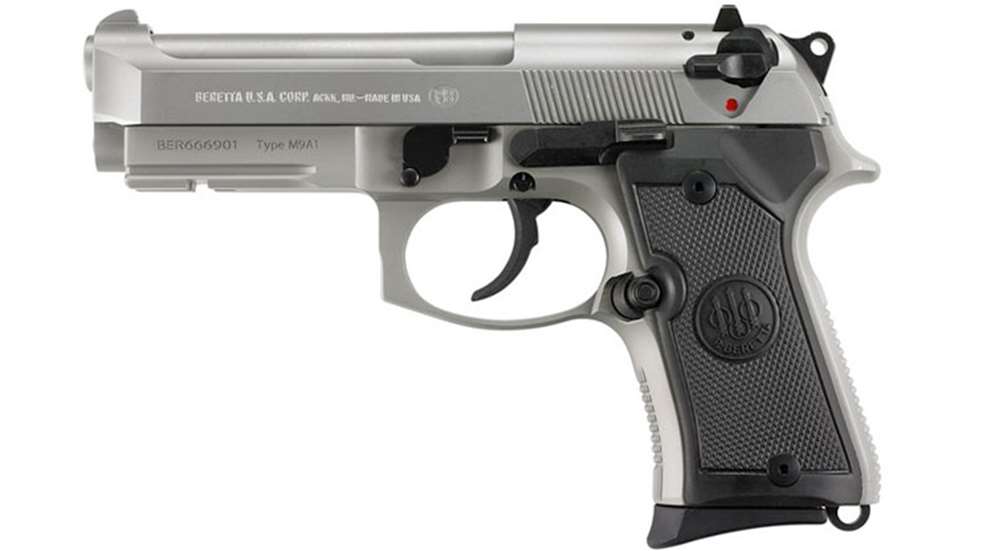
Achieving longevity in the successful pursuit of any endeavor is impressive. Longevity is relative, but the endurance champion of firearms manufacturing has to be Beretta—a company that has been making guns for almost 500 years. One of Beretta's most notable successes occurred about 30 years ago, when the company won the contract for the new, primary sidearm of the U.S. Armed Forces, displacing the iconic M1911 handgun and the legendary .45 ACP cartridge.
Fast forward to 2013. Beretta still produces the M9 for the military and offers several variations of the similar Model 92 to civilians. The latest is the Model 92FS Compact Inox with Rail. While that designation doesn't exactly roll off the tongue, it does a good job of describing many of the pistol's features. Together, the most recent tweaks to the platform represent a modern take on a time-tested defensive handgun.
The M9 and Model 92 have proven to be incredibly reliable pistols when using the ammo for which they were designed. The U.S. military would not continue to equip its troops with a sidearm that didn't work. Yes, some units and personnel are permitted to select other handguns for their particular needs and missions, but the M9 is still standard. Functionally, the 92FS Inox Compact with Rail is the same gun as the full-size 92, which is nearly identical to the military's M9.
Three features distinguish the new 92FS Compact from its predecessors. First, the barrel is 4.25 inches long, or about .75 inch shorter than the one on the full-size 92. The 92FS Compact's grip is also a bit shorter, cutting about .15 inch from the full-size pistol's overall height. And, as you have probably realized by now, the pistol's anodized-aluminum frame includes an accessory rail integral to its dustcover.
The shortened barrel, slide and frame make the 92FS Compact a bit easier to conceal, but the 9 mm pistol still offers a generous capacity even with its abbreviated magazine. To simplify the math, one 13-round magazine in the compact Beretta provides almost the same number of rounds as a .45-caliber 1911 with two magazines. In today's world, where bad people can come at you in bunches, the greater capacity of a wide-body 9 mm pistol can be a good thing.
Whether or not I keep a light or laser sight on a pistol, I like having the option of installing one if and when I choose. I certainly want a rail that offers that capability on a house or car gun, and I'm perfectly OK with having one on a carry gun. Since the 92FS Compact is sized right for all of these uses, the accessory rail is a welcome addition.
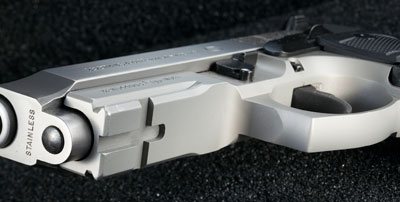
Other noteworthy features include a stainless steel slide, barrel, trigger and trigger pin, safety/decocking lever, slide-stop lever and extractor, which Beretta calls the "Inox" (for non-oxidizing) package. The pistol also incorporates the company's Finite Safe (FS) design, making use of an enlarged hammer pin that interfaces with the bottom of the slide to improve structural integrity. While some of the early 92FS Compact pistols were assembled from frames made in Italy, current production of the model takes place at the Beretta USA factory in Accokeek, MD.
Sights on the 92FS Compact are fixed, with the rear dovetailed into the slide and the front blade integral to the slide. The rear notch is slightly wider than usual, which is a good thing on a fighting pistol since it makes acquiring a sight picture faster by allowing more light to show around the front blade.
Although the sights feature the three-dot system, it's not the standard dot setup. Each dot is a concave hole in the sight face—one in the front, two in the rear—and appears to be painted with bright-red lacquer. The color selection puzzles me; the dot system is meant to help acquire the sights in low-light situations, yet red is not the most visible color. Most sights sporting colored dots, rather than tritium or fiber-optic inserts, tend to use white as the color. It's possible a white dot on the handgun's stainless steel front blade would not be highly visible, but with my deteriorating vision, I would prefer a different color than red. That said, the Beretta sights are simple and rugged, which is exactly what you want on a handgun designed for self-defense.
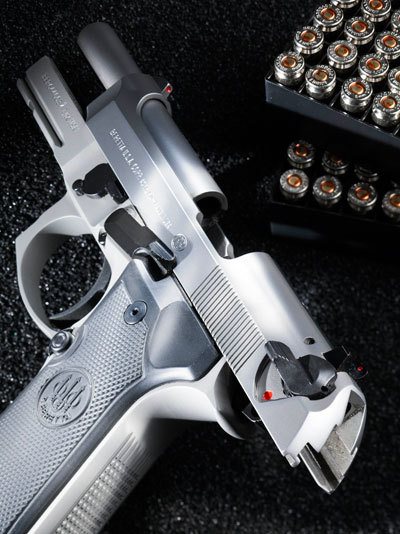
Like all pistols in the 92 family, the 92FS Compact has a combination safety-decocking lever mounted on the slide. Pushing the lever downward rotates the rear portion of the firing pin out of battery and safely drops the hammer. It also disconnects the link between the trigger and the sear. The pistol cannot be fired until the lever is moved up, re-linking the trigger and sear, and positioning the firing pin in line with the hammer.
The lever does not lock the slide when in the "safe," or downward position, and Beretta recommends loading the pistol with the lever down. With this approach, the hammer is automatically decocked as the slide moves forward to chamber a round. This means a double-action trigger pull is normally required for the first shot, unless you load from slide-lock or otherwise manually cycle the slide with the safety off. Either of these cases could occur in a defensive situation, and the hammer would remain cocked after the slide completes its forward movement. Of course, safely carrying the 92FS Compact mandates its hammer be down, and again, the first shot from the holster will require a double-action trigger pull.
Let's talk about the Beretta's grip, because its size—coupled with that first double-action trigger pull—often causes shooters to have problems firing the 92 accurately. As a guy brought up with .single-stack 1911s, I've always considered the 92's grip to be too large for my liking. It seems noticeably larger than the grips found on double-stack, striker-fired pistols, but that's not really the case. Measuring the grip circumference around the smallest part of a Beretta 92, Glock 17 and Springfield Armory XD shows the dimension is close to 5.5 inches on all three.
What makes the 92 seem larger is the distance from the back of the frame to the front of the trigger when the gun is ready to fire in double-action mode. My handy calipers reveal the trigger reach on the Beretta is 2.9 inches. By comparison, the Glock has a reach of 2.8 inches and the XD reach measures 2.6 inches. On paper, those differences don't look very great. When you have short fingers, however, even a little extra reach required to engage the trigger face with enough pressure to move it rearward through a long travel distance can make things tough.
There is some good news. After the slide cycles, putting the Model 92FS in single-action mode with the hammer cocked, the distance to the trigger face is reduced to slightly more than 2.5 inches. In addition, the trigger-pull weight is several pounds lighter and quite smooth, and the trigger has a shorter distance to travel.
I understand the policy for some military units is to carry the M9 with an empty chamber, a fully loaded magazine inserted, the hammer down and the safety/decocking lever up. Deployment procedure is to draw the pistol with the shooting hand and cycle the slide with the support hand, which chambers a round and sets up the gun for a single-action shot. That's one way to get around the double-action trigger pull for the first shot, but it requires quite a bit more time and manipulation than simply firing in double-action mode.
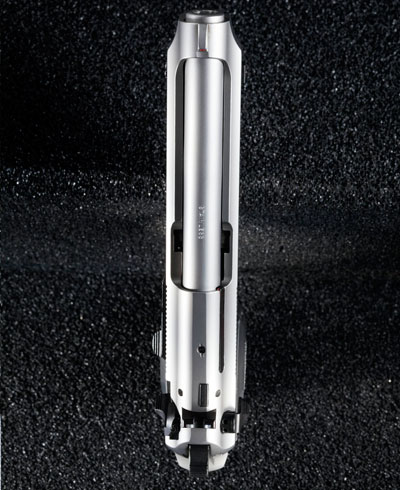
The solution I choose isn't fancy, but it works. It's a bit of a reach for me to operate any Model 92 trigger, including the one on the Compact, in double-action mode, but practice has led to confidence. Admittedly, my shooting hand slips around slightly to the right side of the gun and is no longer in direct line with the bore axis, but the 9 mm's mild recoil and the gentle contours of the 92FS backstrap are forgiving. I also tend to increase grip pressure with my support hand, which helps recovery time between shots.
My range sessions with the 92FS Compact involved a couple retired Marines and an active-duty police officer, as well as four civilian women. Some of us ran the pistol with no problems, while others—including one of the Marines—expressed concern over the first double-action shot. While all the women shot the pistol well in single-action mode, they had trouble operating the double-action trigger. The exercise proved that, like any handgun, the 92FS Compact is not a one-size-fits-all pistol, despite the standardization of the closely related M9 as the primary issue pistol of the U.S. military.
There are two areas where the 92FS Compact excels in ergonomics. The slide-stop lever is easy to reach with the strong-hand thumb—easier, in fact, than the lever on a 1911. Beretta furnishes the pistol with two magazines, and both have a bumper pad that allows the pinky to participate in the shooting grip rather than sliding under the gun's frame. For me, having my pinky finger on the gun is more important with a wide-body pistol than with a single-stack model. While the slightly recessed lanyard ring in the base of the pistol's frame may not be used by most civilians, it's a nice touch that doesn't interfere with the shooting grip.
On the range, the 92FS Compact performed as you would expect of a pistol with combat lineage. Although the stainless steel front-sight blade and red-colored dot system wasn't optimum for my senior-citizen eyes, I managed respectable 25-yard groups that measured from 2 to 5 inches with a wide range of loads. Group centers varied in height, but not latterally. The 100- and 115-grain Cor-Bon loads were dead-on, while the company's 90-grain offering was 2 inches high. The 147-grain loads from Hornady and Winchester, along with some hot stuff from Buffalo Bore, printed 1 to 2 inches low. With the pistol's open-roof slide design, there's a 180-degree opening for spent brass to exit. You almost never hear of a cycling malfunction, and I experienced no problems in any of my shooting sessions, which included some of Buffalo Bore's +P+ loads.
Like many Americans, I was hurt, shocked and indignant when the Army retired the M1911 pistol and .45 ACP round, but I've certainly come around on the Beretta M9 and Model 92 family. The 92FS Compact deserves the same recognition. This new Beretta looks exactly like what it is—a well-made pistol sized for carry that will last you and your family for a lifetime and beyond.
Specifications
Manufacturer: Beretta USA; (800) 237-3882
Action Type: Recoil-operated, semi-automatic
Caliber: 9 mm
Capacity: 13+1 rounds
Frame: Type III hard-coat, anodized aluminum
Slide: Stainless steel
Barrel: Stainless steel; 4.25 inches
Rifling: 6 grooves; 1:9-inch RH twist
Sights: Fixed, 3-dot
Trigger Pull Weight: 11 pounds, 2 ounces (double action); 5 pounds (single action)
Length: 7.75 inches
Width: 1.5 inches
Height: 5.25 inches
Weight: 31.4 ounces
MSRP: $775
Shooting Results
| Load | Velocity | Average Group Size |
| Cor-Bon Self-Defense 90-grain JHP +P | 1,483 | 5.0 |
| Glaser 100-grain Pow'R Ball JHP +P | 1,527 | 5.0 |
| Buffalo Bore 115-grain JHP +P+ | 1,280 | 5.5 |
| Cor-Bon 115-grain DPX +P | 1,241 | 4.5 |
| Buffalo Bore 124-grain JHP +P+ | 1,199 | 4.0 |
| Hornady Custom 147-grain XTP | 935 | 2.0 |
| Winchester Ranger 147-grain SXT | 981 | 3.0 |
Velocity measured in fps 10 feet from the muzzle for 10 consecutive shots with a Competition Electronics Pro Chrono chronograph. Temperature: 78 degrees Fahrenheit. Accuracy measured in inches for five consecutive, five-shot groups from a bench at 25 yards.













